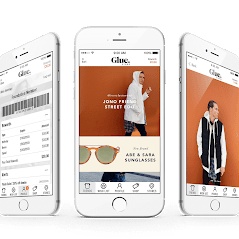HERE’S HOW WE CAN HELP:
Platform review, analysis and recommendations
Program incentives, benefits and services review & recommendations
Team review, analysis and recommendations
Customer research and analysis
Customer journey mapping & communication tiggers
UX and UI design
Team augmentation
Upskill and education of your internal team
Roadmap and prioritisation of initiatives according to value
NEED MORE INFORMATION?
Get in touch with us about your requirements or read more about our Strategic Direction, Solution Design and Implementation Support services.
Our Approach to Loyalty & Incentives Programs
Loyalty Programs. Incentive Schemes. Benefits and Offers. Call it what you will, but the outcome should be about building a reason for your customers to keep engaging with your brand and increasing their purchasing habits across ATV and frequency. To do this, many retailers will start with the old points system, or the ‘coffee card’ approach, whereby customer gets closer to a reward each time they shop. Once they hit a target of frequency or transactional value, they are rewarded in some way; often with a discount or freebie.
We take a more sophisticated and customised view of incentives and benefits programs. A cleverly designed program should connect customers to the brand through a first party relationship. Ultimately, this will leave few unknown customers as they should always have a reason to create a profile and connect their transactions providing the brand a wealth of customer data. Connecting known customers to interactions, transactions, products and experiences provides brands with increased insight to make smarter business decisions, as well as understand their customers, and reward the best ones with experiences, services and offers they truly value.
The purpose of any of these programs is of course increasing frequency and value of each shop for the brand, but the most successful programs provide greater benefits to the customer. The loyalty aspect of these programs should be a bi-product of the great experience and benefits the customer feels they receive, rather than an enforced loyalty brought about by a carrot and stick approach.
Incentive design should therefore be not only measured by its value to the business in a monetary sense - although this by far and away why most businesses implement these programs, and do see a substantial financial benefit of having these in place over retailers who do not - but also the value it provides the customer and the subsequent brand preference and loyalty it generates.
There are three types of incentives: The best, the adequate and the bad. The best incentives are those that are closely aligned to the brand vision and provide a reason to shop. Both are ongoing and sustainable. This may, for example, be an offer to members by a company that prides itself on sustainable products of free pick up and recycling of the packaging their product arrives in, which is upgraded to a personal courier to do away with all packaging in future, the more they shop. The adequate incentives are closely aligned only to reasons to shop but are still ongoing and sustainable. These can include dollar rewards for the customer’s next shop depending on the amount spent in their last purchase. The bad, are not aligned to the brand and do not provide a sustained benefit and can include gimmicks such as offers for other brands or tickets to a sponsored event.
Incentives may be deemed financial or experiential and rarely fall outside of these two classifications. Financial covers money back, reward dollars, and discounts, while experiential can cover upgraded shipping options, faster transactions, or access to better services. How each of these is implemented is best determined for the brand by first understanding the best customers and designing incentives that will not only meet their needs but exceed their wants and build an ongoing relationship between them and the brand for a greater return on investment from the program.




